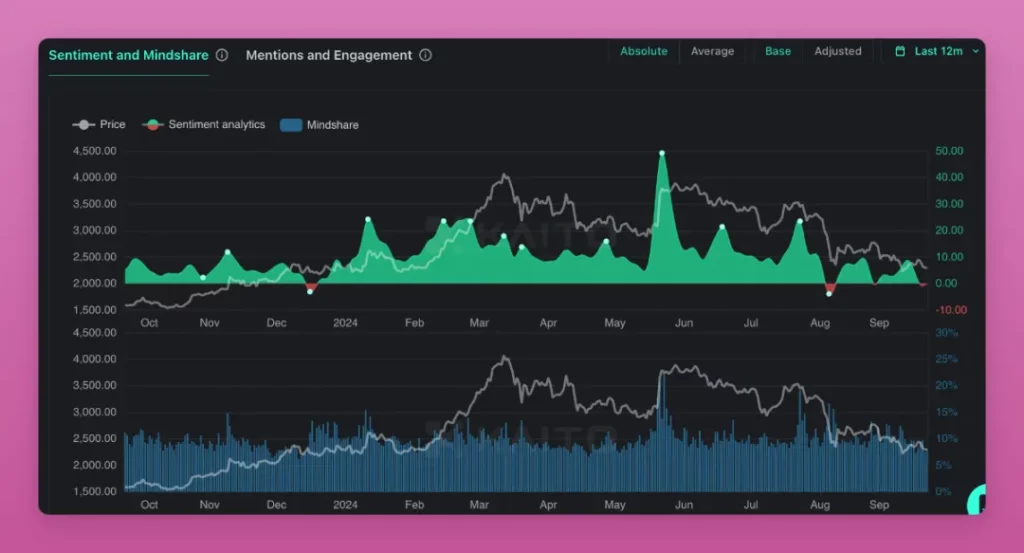Is there still optimism for ETH in the market?
This year, ETH’s market sentiment has turned to extreme pessimism for the fourth time. With decreasing income and burn rates, the narrative of “ultrasound money” seems to have vanished.

Layer 1 activity is essential but is being offloaded to Layer 2 solutions, raising concerns about the apparent lack of benefits for ETH. Crypto influencer DCinvestor aims to reposition ETH as a programmable currency, emphasizing that this is its most crucial narrative—focusing on ETH as the primary collateral, rather than income and burn metrics.
However, Zach Rynes from the Chainlink community argues that stablecoins have proven to be a more effective and widely adopted form of programmable money than ETH. As more Layer 2 solutions utilize their native tokens for gas fees, the “digital oil” narrative surrounding ETH is also fading, causing unease even among developers. Ambient founder Doug Colkitt humorously likens Ethereum’s rollup-centric plans to a pilot convinced everything will work out, despite evidence suggesting otherwise.
Is it all over for ETH?
Crypto influencer MilliΞ believes evaluating ETH’s value requires social awareness, a grasp of the industry’s mission, recognition of network effects, skepticism toward fiat currencies, and confidence in innovative internet-native societies. ETH is unique and difficult to fit into traditional narratives like “digital oil” or “tech stocks.”
Its true value lies in the potential to create a sovereign economy on the internet, free from intermediaries or legacy systems. This vision requires forward-thinking, an understanding of network effects, and a recognition of unrealized possibilities. Ethereum will define its future beyond current frameworks.
Some may argue that older generations and institutions struggle to embrace this perspective. However, mikeneuder offers a forward-looking example, suggesting that Ethereum can provide a decentralized, self-custodial, permissionless system for global value transfer, impervious to seizure or censorship. This is central to its long-term value proposition.
Decentralization is not just a bonus; it is vital. In a world where governments and corporations impose centralization, Ethereum’s neutral and censorship-resistant design makes it a unique digital property system. Bitcoin may offer censorship resistance, but as block rewards decrease, it will rely more on transaction fees to incentivize miners, potentially threatening its long-term security.
As Ethereum’s roadmap for scalable rollups diverges from Bitcoin’s static development, the latter struggles to adapt. Adam Cochran from Cinneamhain Ventures believes that rollup-based solutions could fundamentally change incentive structures and significantly boost ETH’s monetization potential, possibly increasing long-term demand for ETH by 100 times.
While the transition to proof-of-stake and ETH burning seems to be progressing, uncertainty surrounds Ethereum’s narrative as prices remain stagnant. Personally, I find it intriguing to witness the community’s efforts to redefine Ethereum’s narrative. I align with MilliΞ’s view that greater social awareness and a deep understanding of the crypto mission are essential to appreciate the value ETH offers.
However, when greed and speculation cloud judgment, the industry often strays from its mission. It’s only during tougher times that core values resurface. Additionally, it’s encouraging to see more active discussions between the Ethereum Foundation and Layer 2 builders, with Vitalik increasingly engaging in community dialogues.
This demonstrates a growing urgency to get back on track. But, as Doug Colkitt asks, “Are you sure the runway is long enough for this plane?”
In summary, I remain firmly bullish on Ethereum—even if it’s a bias.